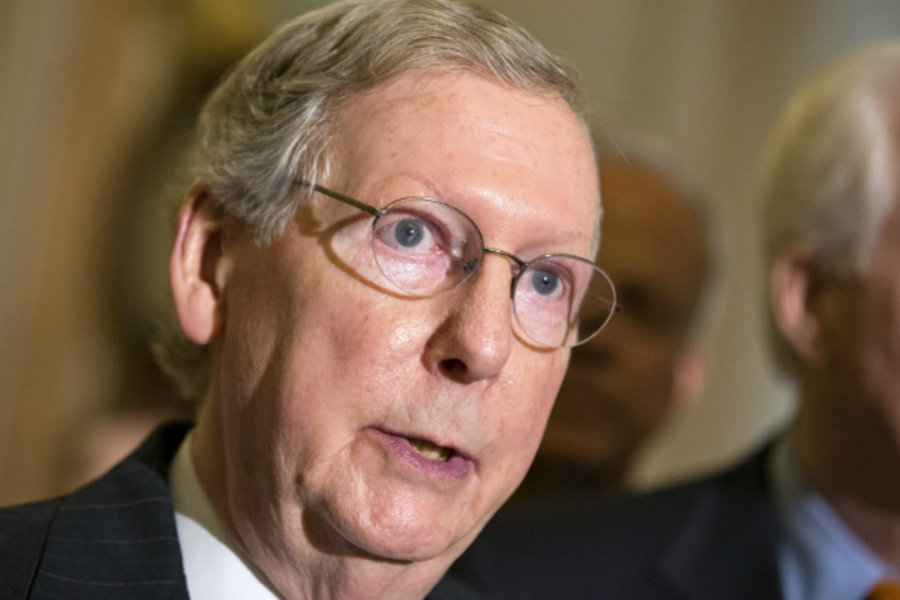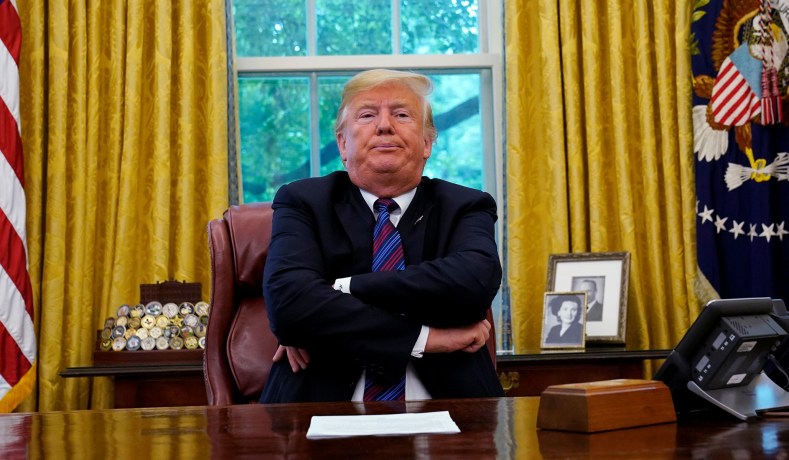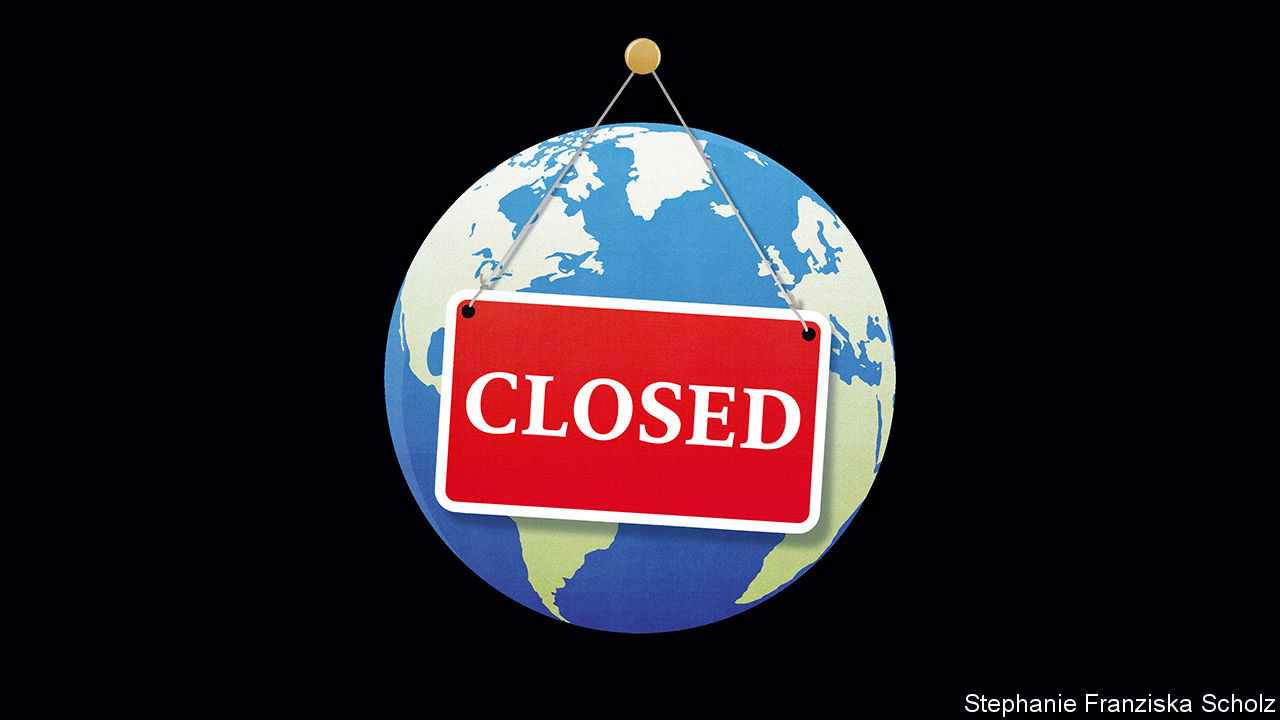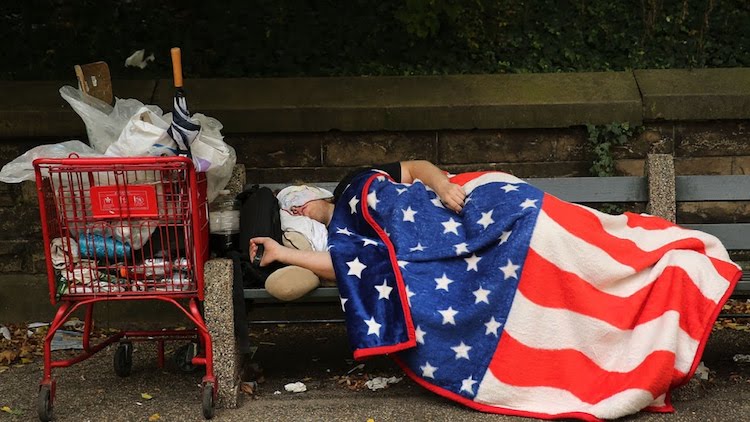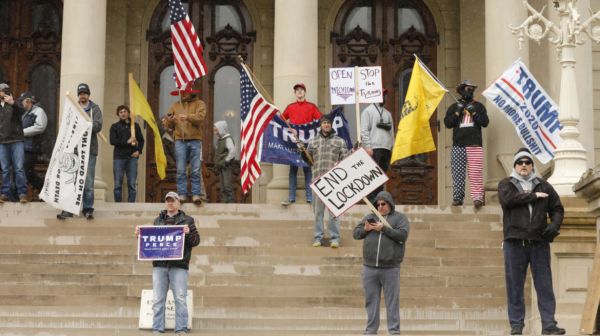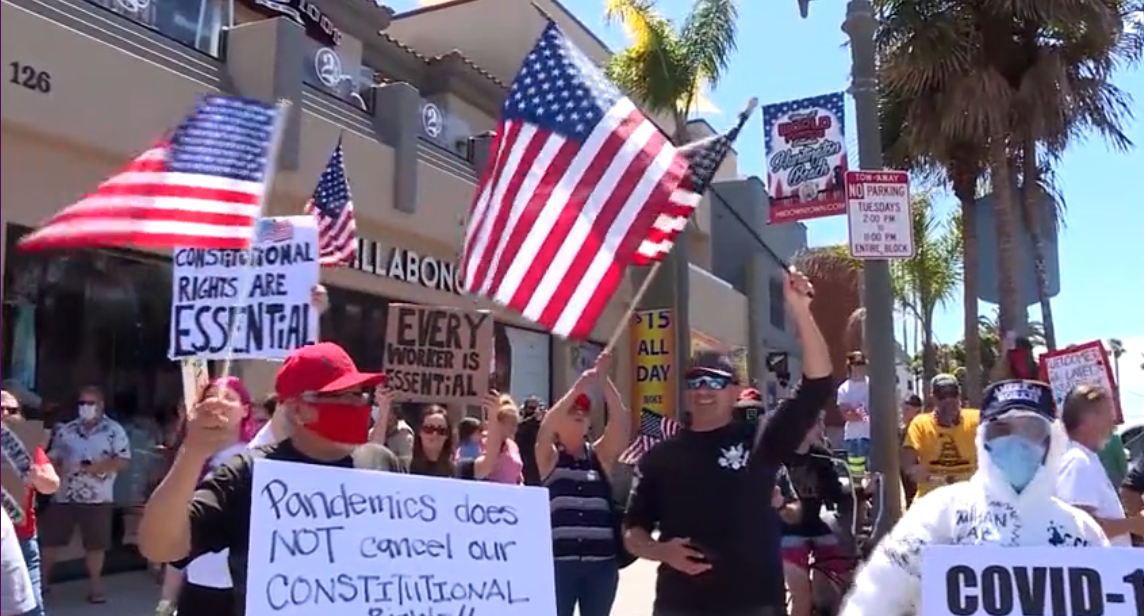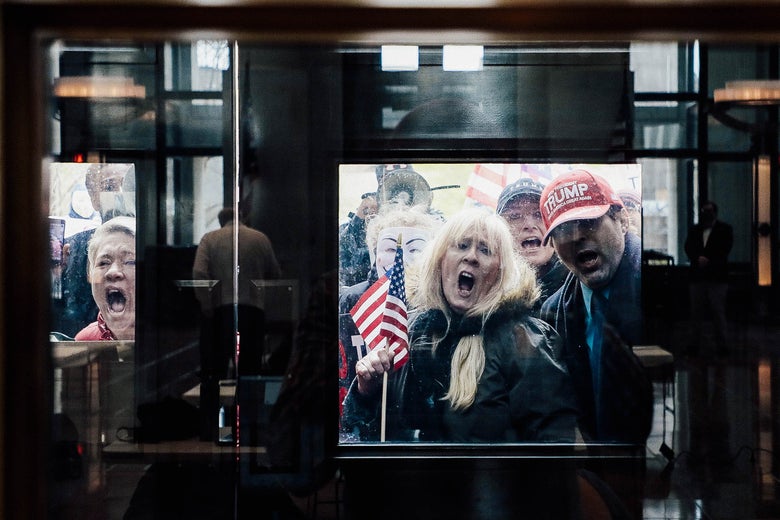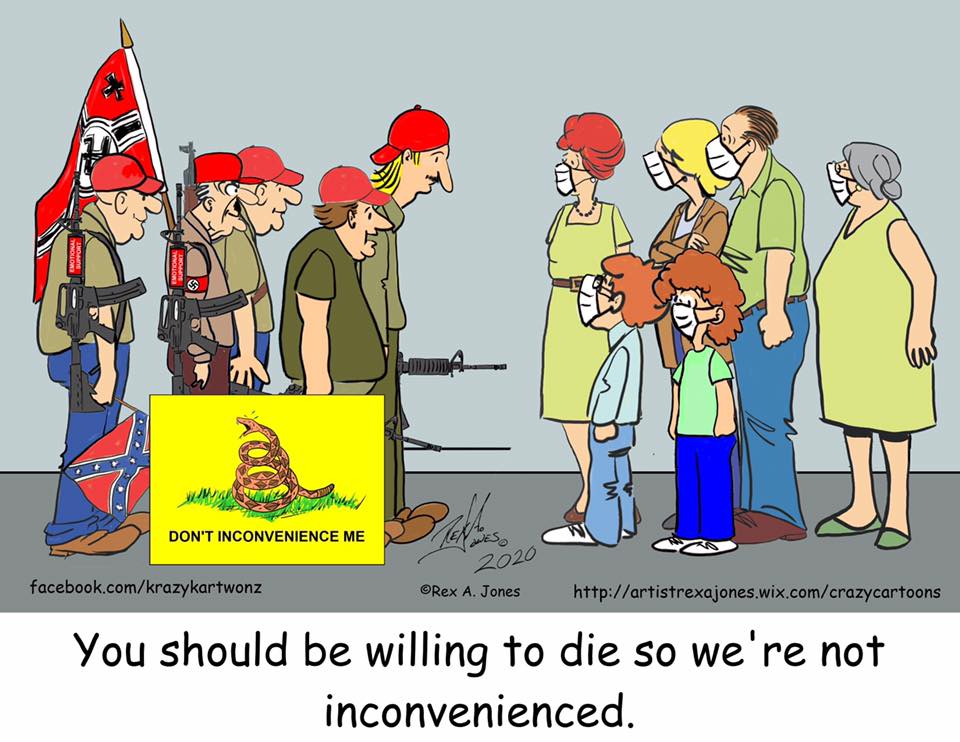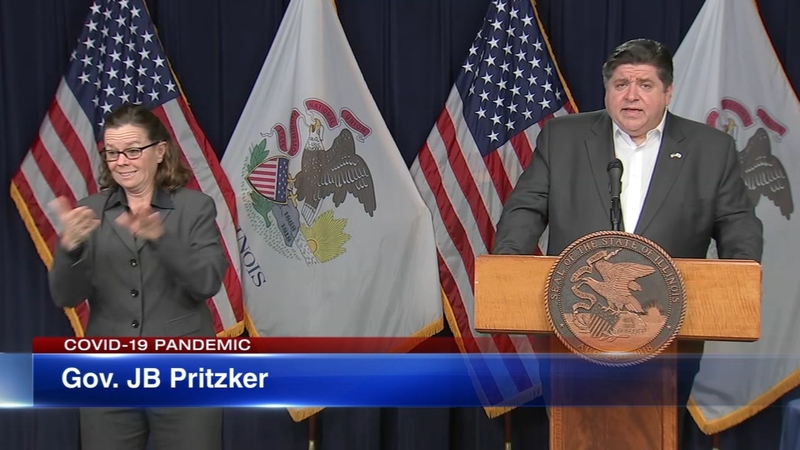Just for the record, here’s a video of the segment of yesterday’s Trump Show in which Trump proposed injecting people with disinfectant. That’s what he said. Loudly and clearly.
And this is from the official White House transcript of yesterday’s Trump Show:
And then I see the disinfectant, where it knocks it out in a minute. One minute. And is there a way we can do something like that, by injection inside or almost a cleaning. Because you see it gets in the lungs and it does a tremendous number on the lungs. So it would be interesting to check that. So, that, you’re going to have to use medical doctors with. But it sounds — it sounds interesting to me.
Is he not saying that we should try injecting disinfectant? Of course, that’s what he’s saying.
I’m bringing this up because the disinfectant remark was stupid even by Trump standards, and right-wing media is tripping all over itself claiming that he didn’t say what he said. For example:
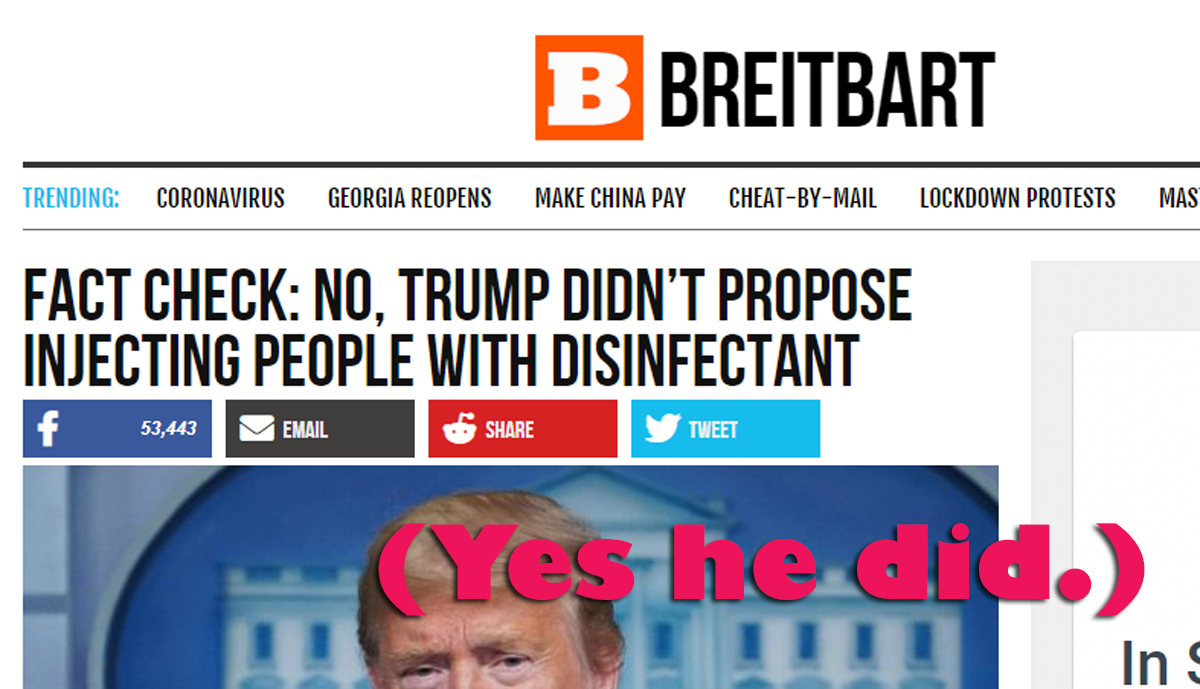
I don’t dignify Breitbart with links, but the article says:
Trump used the word “inject,” but what he meant was using a process — which he left “medical doctors” to define — in which patients’ lungs might be cleared of the virus, given new knowledge about its response to light and other factors.
Let’s review:
And then I see the disinfectant, where it knocks it out in a minute. One minute. And is there a way we can do something like that, by injection inside or almost a cleaning. Because you see it gets in the lungs and it does a tremendous number on the lungs. So it would be interesting to check that. So, that, you’re going to have to use medical doctors with. But it sounds — it sounds interesting to me.
Especially in the larger context, in which he also proposed shining lights into the body to kill the virus, there’s no mistaking that he was proposing injecting people with disinfectant.
A lot of people have called for the networks to stop broadcasting the daily briefings. Some of them have complied; The Trump Show has disappeared from my local NBC affilliate, possibly because it was pre-empting Jeopardy and viewers complained. I suspect there will be louder calls now to cancel the Trump Show before people start dropping dead from drinking Lysol.
The makers of Lysol want you to know you should not injest their product, btw.
But I’m wondering if we’re being hasty. If Trump wants to make a fool of himself on television, why get in the way?
There’s a long but fascinating article in the New York Times headlined Home Alone at the White House: A Sour President, With TV His Constant Companion by Katie Rogers and Annie Karni. This reveals a lot, including about the origins of The Trump Show.
Mr. Trump became enraged watching the coverage of his 10-minute Oval Office address in March that was rife with inaccuracies and had little in terms of action for him to announce. He complained to aides that there were few people on television willing to defend him.
The solution, aides said, came two days later, when Mr. Trump appeared in the Rose Garden to declare a national emergency and answer questions from reporters. As he admonished journalists for asking “nasty” questions, Mr. Trump found the back-and-forth he had been missing. The virus had not been a perfect enemy — it was impervious to his browbeating — but baiting and attacking reporters energized him.
“I don’t take responsibility at all,” Mr. Trump told White House correspondents in answer to one question.
The next day he planned to attend a briefing, but since he was there he was encouraged to just take the podium. And a television phenomenon was born.
The daily White House coronavirus task force briefing is the one portion of the day that Mr. Trump looks forward to, although even Republicans say that the two hours of political attacks, grievances and falsehoods by the president are hurting him politically.
Mr. Trump will hear none of it. Aides say he views them as prime-time shows that are the best substitute for the rallies he can no longer attend but craves.
Mr. Trump rarely attends the task force meetings that precede the briefings, and he typically does not prepare before he steps in front of the cameras. He is often seeing the final version of the day’s main talking points that aides have prepared for him for the first time although aides said he makes tweaks with a Sharpie just before he reads them live. He hastily plows through them, usually in a monotone, in order to get to the question-and-answer bullying session with reporters that he relishes.
Reviewing the transcript, it appears the “disinfectant” remarks came after the prepared talking points part of the program. He might help himself if he, you know, rehearsed some of the show before going live. But I guess that would be too much work.
The article also describes a typical Trump day this way: He shows up in the Oval Office about noon, having been up since 5 am watching television — “Fox News, then CNN, with a dollop of MSNBC thrown in for rage viewing” — and making calls with the television audible in the background. He’s mostly interested in what people are saying about him, not in the news per se. In the afternoon he is given his daily security briefing — whether he pays attention or not isn’t clear — holds staff and other meetings, and makes more phone calls before it’s time for The Trump Show, which apparently is all he really cares about. After the show he watches television in his private dining room, comforting himself with french fries and Diet Coke. He may occasionally have dinner with Melania and Barron before retiring to his bedroom to watch more television.
Somehow I don’t see Franklin Roosevelt or Abraham Lincoln spending most of the day watching television to see what people were saying about them.
Anyway — so should The Trump Show be canceled? I say no. If the man wants to hang himself on live television, let him. There also have been calls to give Joe Biden equal time, since The Trump Show amounts to unpaid campaign advertising. At the moment, though, it may be just as well if Biden stays in the background while Trump stumbles around. We’ve got a few months left before the general election. See Joe Biden is leading in presidential polls as a generic alternative to Trump.
And as of this morning, 50,939 Americans are known to have died of covid-19.
Other Stuff to Read
Politico, Trump owes tens of millions to the Bank of China — and the loan is due soon. Maybe China will repossess him.
Washington Post, FDA issues hydroxychloroquine warning, citing serious effects, including death
Paul Krugman, McConnell to Every State: Drop Dead
Timothy Egan, How Republicans Became the Party of Death

